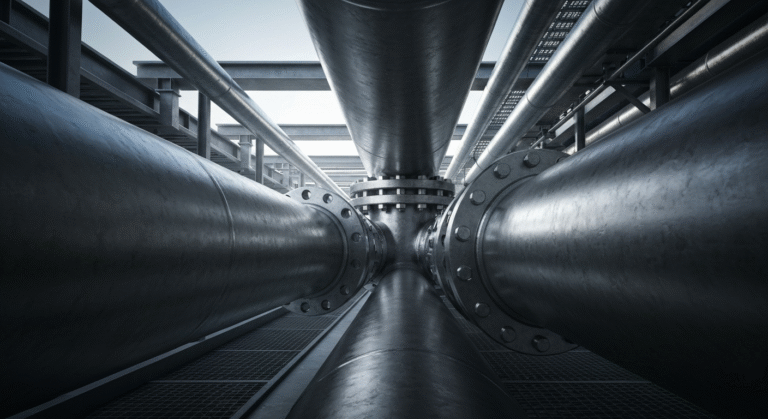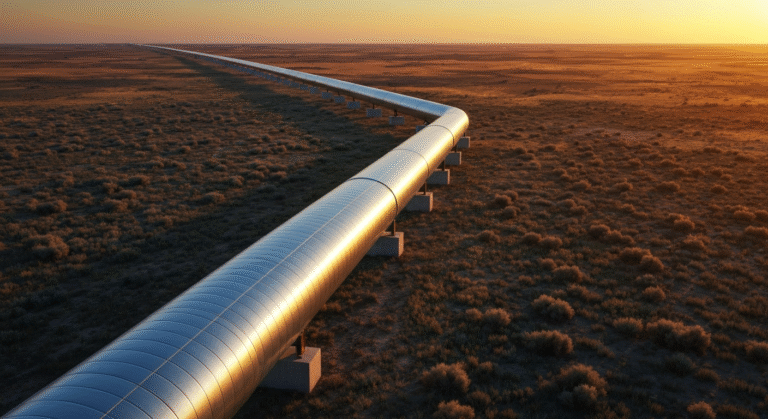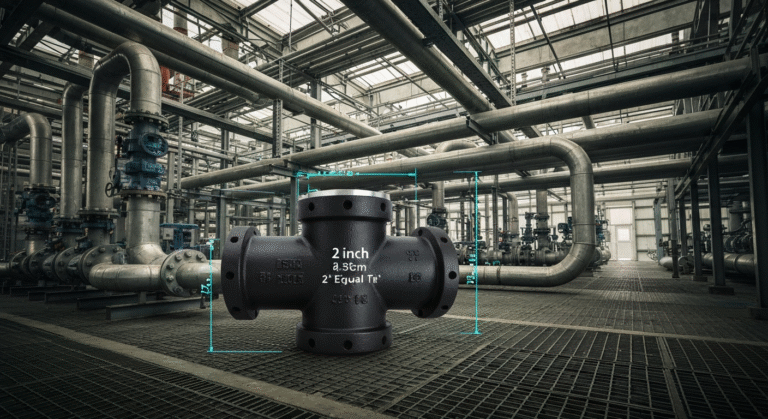-
Yinzhuang Industrial zone,Mengcun county,Cangzhou city,Hebei province,China

Codos de tubería: Tipos, usos y características esenciales
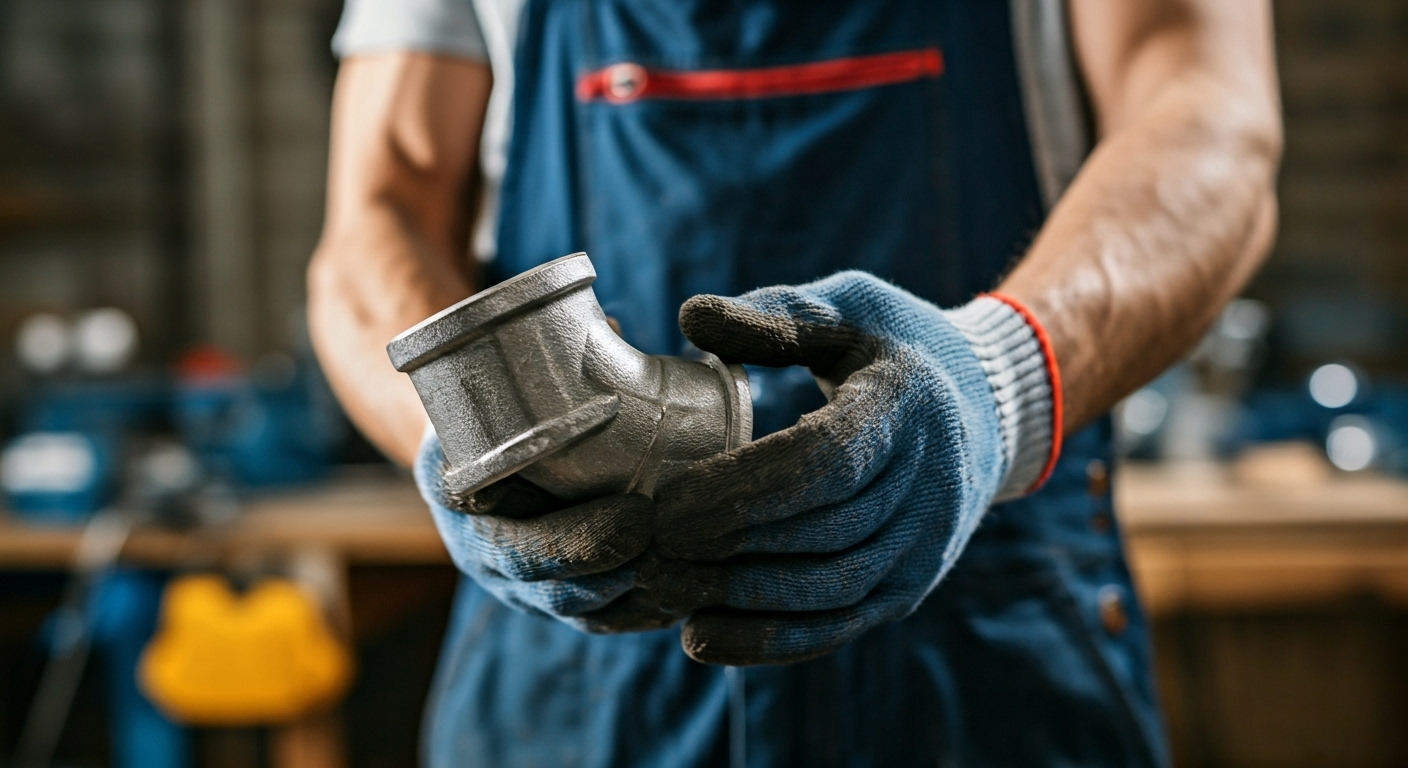
Key Highlights
- Explore the diverse tipos de codos de tubería, perfectos para usar en sistemas de agua, gas y otros fluidos cruciales.
- Key materials like acero inoxidable and codos de PVC ensure reliability across different applications.
- Understand how radio de curvatura impacts installation performance in Chilean market standards.
- Learn the benefits of alta resistencia and compatibility that make each type suitable for various projects.
- Gain insights on Chilean normativas clave and proper installation techniques to support an amplia gama de aplicaciones effectively.
Introduction
Codos de tubería are important parts to have in a pipeline. These help you change the direction of tubos. They do this in a way that keeps the fluid moving well and uses space well. The forma de codo can change in both angle and radius. This makes them great for many sistemas, like plumbing, gas lines, or places with fluids in factories. People use them in building work and in daily tasks. They really matter in all of these uses. But how do you know which type of codo is right for you? Let’s look at some key things so you can make the best choice for your installations.
Tipos de codos de tubería

Codos de tubería come in many tipos to meet different needs. The forma of these codos can be angles like 45°, 90°, or even special curves. This helps you get the flow you want in a system. If you use a codo de radio corto, you can save space when you have to work in a small area. Some codos with special angles help everything fit well in systems that are more complex.
To pick the best codo, you need to look at the kind of material you want. This might be acero inoxidable, pvc, or metals like cobre. Every kind of codo has its own good points. You need to pick the one that fits what your project needs.
Codos de 90 grados: aplicaciones y ventajas
A codo de 90 grados helps make tight turns in pipes. This forma is made to keep flujo steady. It helps stop too much moving around inside the pipe. You can see these in many places that move water, gas, or petrochemical fluids every day.
Some advantages are:
- Unidades come in many sizes and types, so they fit almost any job.
- It cuts down on fugas, since the design is strong and well-made.
- These can be used in building drains, water pipes, and systems for getting rid of dirty water.
These codos make sure everything stays firm when you use them. People want these wherever they need work done right the first time. With strong piezas, these are now used everywhere—in homes, at work, and in big factories.
Codos de 45 grados: cuándo utilizarlos
Unlike some sharper elbow joints, codos de 45 grados help pipelines make smooth turns. You will find them in drainage systems and places where liquid moves through pipes. These fittings are light in weight but still give great calidad, so they hold up well in water networks.
These codos work well for:
- Handling delicate drenaje setups that need less sharp turns.
- Supporting pipelines with less peso, making them easier to install.
- Keeping top agua quality by letting water move well without blockages.
These codos fit both home and industrial use. Their smooth design helps keep things clean by stopping buildup. This also helps protect against wear over time. If you want lighter systems with better peso balance, codos de 45 grados can be the answer.
Codos de ángulos especiales y personalizados
For special building or plumbing projects, codos de ángulos especiales give you flexible solutions. You can use these with your custom designs, and the unidad way they are made helps everything fit well, so the project lines match up.
Key applications include:
- Helping a wide mix of uses, covering many things, like irrigation and tricky air conditioning setups, for an amplia gama de aplicaciones.
- Using thermofusion for quick, strong, and steady pieza connections.
- Giving reliable inter connections when joining pipes.
If you have a project with unusual angles or you need to put in strong systems, these fittings are great. Their flexibility makes it easier for you to meet both small jobs and bigger tasks. By choosing these customizable fittings, you will find it much easier to get what you need for today’s building problems.
Materiales más comunes en codos de tubería
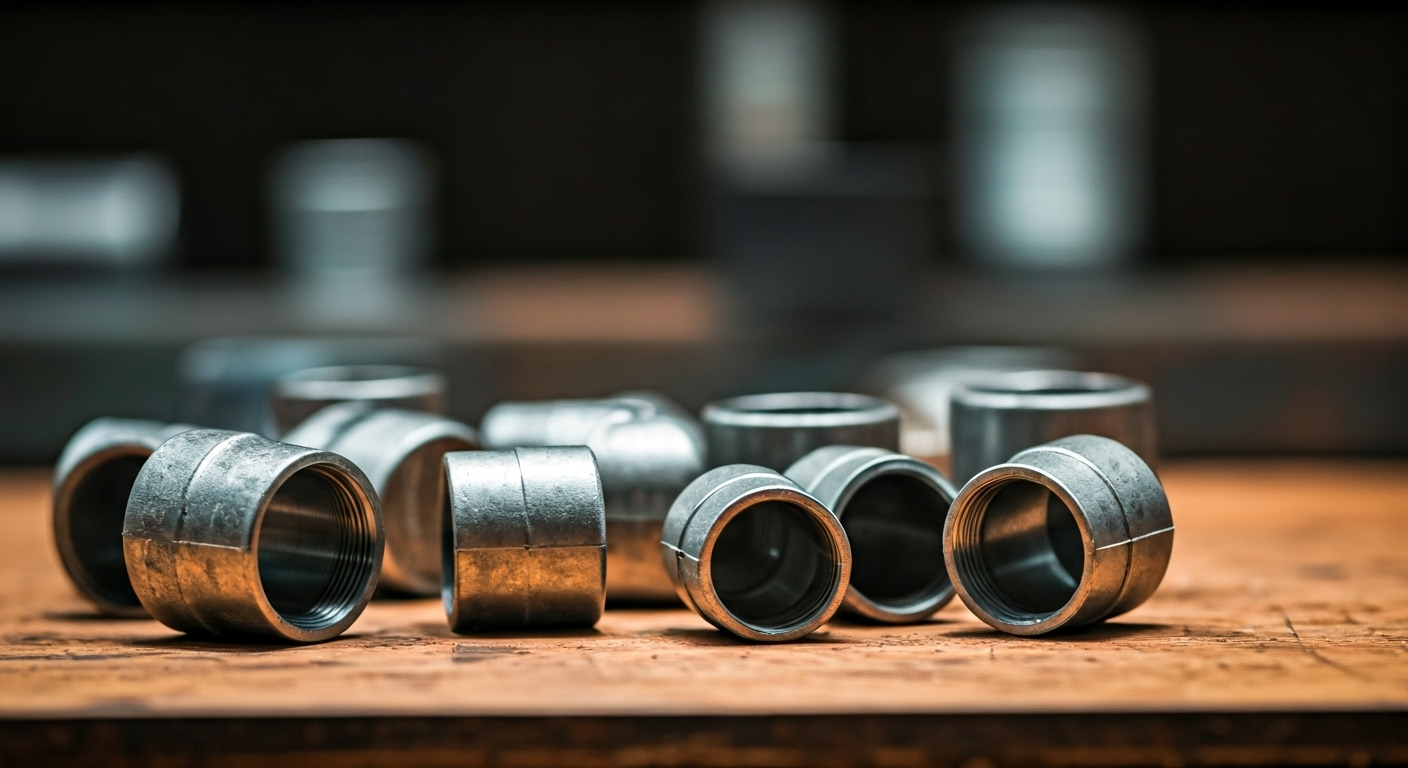
Different materiales have a big effect on how well and how long codos de tubería last. Acero inoxidable is well-known for its calidad and for being very tough. It can take on a lot of pressure, and it does not rust, so you find it in many types of industries. PVC codos are different. These are flexible, light, and don’t cost a lot. Many people like to use them at home or for small industrial jobs because they are easy to work with.
You can also pick codos made from hierro. This material gives you a strong, old-style choice. It works very well for harder uso where you need more balance and strength. It lasts a long time, even in rough spots. The kind of material you pick will help your installations be better and last even more. This is why thinking about materiales, calidad, uso, and resistencia is so important.
Codos de acero inoxidable: resistencia y durabilidad
Codos de acero inoxidable with alta resistencia are well known for being tough and able to handle tough situations. You can use this material when there are fluids that can cause rust, or when there is a lot of pressure, or if you need it to last over long tiempo. With these, you get good performance all the time.
Benefits include:
- There is less chance of fugas. The strong design and good connections help with that.
- You can count on the durabilidad, even when it gets used a lot or is put under pressure.
- The fittings keep working even in projects where you need things to be exact, and the flow of fluids needs to be just right.
Picking acero inoxidable fittings with alta resistencia gives you what you want: practicality and real dependability. That way your work has the right pieces, made just for professional use.
Codos de PVC y plásticos: usos domésticos e industriales
Moving through homes and in different industries, codos de PVC fit well with lightweight water and drainage systems. Their herramientas are easy to use and they work well. This makes them great for people who care about precio and want to change things to fit their needs.
Key characteristics include:
- Better support for everyday uso or even for pipelines placed outside by others.
- Works with different agua flow types and can handle many pressure levels.
- Handles drenaje well so there are no blockages.
This type is strong without being costly, so many people pick it for home and small factory jobs. These work well where simple and good pvc, water management, the right herramientas, and smart drenaje solutions at a fair precio are needed.
Codos de hierro, cobre y otros metales
Strong and reliable, codos de hierro stand for tough industrial resistencia. The forma de codo de hierro fits well into the pipeline. This good fit helps keep the flow smooth and reduces problems. These are often used in places that need more strength. The metal build helps them last longer and stops fast wear.
Key advantages include:
- Top quality with cobre, be good for busy, everyday uso.
- Offered in carbono blends. These blends help add support for strong and big industrial work.
- Fits both small or large categorías by adapting well to what people need every day.
With a balance of modern looks and classic materiales, these parts are needed in many busy and growing places.
Características técnicas esenciales de los codos
Important características shape the way codos improve pipelines. The radio de curvatura helps pipes adjust in many situations. It keeps the flow smooth and keeps movement in the pipes steady when they work. When you think about the diámetro and how the fluid moves, pipes stay stable. They work better under clear spots of pressure or with different materials you pick during setup.
How well things fit together has a lot to do with how the whole system works. Good focus on high-presión setups keeps the system safe from outside damage. This makes sure it works well and gives solid results for even the most demanding uses.
Diámetros y dimensiones estándar en Chile
Below is a table that shows the diámetro and peso details:
Diámetro (pulg) | Unidad específica (mm) | Peso | Aplicación |
|---|---|---|---|
½ pulgada | 15mm | Lightweight | Domestic Water Systems |
2 pulgadas | 50mm | Heavier | Residential plumbing setups |
5 pulgadas | 125mm | Bulkier variants included | Industrial HVAC |
To get the best results, always use the right unidad and pulg or pulgada as listed. Take measurements using the size chart from the specs. This helps your fluid system work well and have the best flow.
Presión nominal y compatibilidad con tuberías
La presión nominal es muy importante cuando vas a escoger un codo para la tubería, ya que te dice cuánto puede soportar la pieza en sistemas con agua o gas. Para que el codo funcione bien en los sistemas, el material debe ser el correcto. Se puede usar acero inoxidable, PVC, o hierro, y cada uno tiene sus ventajas que lo hacen bueno para algunos trabajos.
Por ejemplo, un codo de radio corto se ve mucho en lugares donde no hay mucho espacio. Este tipo de codo sirve para que el flujo del agua o gas no se corte, incluso en áreas pequeñas. La elección del material y el tipo de codo como el codo de radio corto ayuda a que haya menos fugas y más resistencia con el uso. Así, vas a lograr una mayor durabilidad en la pieza y en todo el sistema.
Normativas chilenas para codos de tubería
Las reglas en Chile para los codos de tubería ayudan a asegurar la calidad y la seguridad en su uso. Estas normas se centran en la presión que pueden soportar, la compatibilidad de los materiales, y los detalles del diseño. El objetivo es tener un buen flujo de agua y gas en todos los sistemas. Los codos hechos de acero inoxidable, PVC y hierro deben seguir reglas claras para cada material. Esto es clave para evitar fugas y lograr que los sistemas sean duraderos. El cumplimiento de estas regulaciones cuida tanto a la industria como a quienes las usan en casa.
Usos principales de los codos de tubería
La variedad de codos de tubería hace que se usen en muchos lugares. Los puedes ver en sistemas de agua, redes de drenaje y hasta en gas. El uso de materiales como acero, pvc y hierro ayuda a que el flujo sea bueno y no haya fugas. Esto es gracias a que tienen alta resistencia y un diseño pensado para durar. Ellos son muy comunes en la construcción de Chile porque se adaptan bien a cambios y resisten el uso diario. Cada codo se escoge por su forma y porque sirve mejor en un sistema u otro. Gracias a eso, hay más durabilidad y menos problemas en estos trabajos.
Aplicaciones en redes de agua potable y gas
La versatilidad de los codos de tubería es importante en las redes de agua potable y gas. Aquí, la fluidez y la resistencia son clave porque hay que evitar problemas y asegurar un buen trabajo. Los codos de PVC y de acero inoxidable sobresalen porque tienen una gran durabilidad y pueden soportar mucha presión. Cada forma de codo, ya sea de radio corto o con otra forma de curvatura, está hecha para hacer que el agua y el gas pasen mejor. Esto ayuda a que haya menos fugas y da más eficiencia en el transporte. Por eso, se logra un suministro de agua y gas seguro, confiable y bueno para todo tipo de usos.
Empleo en sistemas de calefacción y climatización
En los sistemas de calefacción y climatización, el codo es una parte muy importante. Ayuda a que el flujo de agua caliente y aire pueda moverse bien en la tubería. La forma de codo, como el codo de radio corto, hace posible cambiar la dirección del agua o del aire sin que se pierda eficiencia. Esto ayuda a cuidar que la temperatura en los espacios sea la correcta y que las personas estén cómodas.
Los codos hechos de materiales como acero y PVC son conocidos por su alta resistencia. Estos codos también tienen buena durabilidad, por lo que el sistema funciona bien por más tiempo. Gracias a esto, hay menos riesgo de fugas y todos pueden confiar en sistemas de calefacción y climatización que trabajen como se espera.
Utilización en la industria y construcción chilena
The use of pipe elbows in Chile’s industry and construction is very important. These are used to keep the flow working well in systems for drainage, water, and gas. These pipe elbows are made in different materials like steel, PVC, and iron. They have great strength and can stand up to high pressure and hot or cold temperatures. With a wide range of uses, clients can choose either short radius or long radius elbows. This helps them match their needs. It also makes sure the systems stay strong and work well. The wide range of pipe elbow applications in these systems means water, steel, and PVC continue to be common materials. Good resistance and long-lasting use help customers trust the flow in their drainage and other constructions.
Conclusion
In conclusion, codo parts are very important in many sistemas where you need the pipe to turn, like in agua, gas, and heating. The choice of material, like acero inoxidable, PVC, or hierro, will affect how long the part lasts and how well it stops fugas. There are many tipos and shapes of codo, so it is important to follow the right rules and check the specifications to be sure the system will work well. When you pick codos made of good calidad, you get more durabilidad, resistencia, and better service for a long time.
Frequently Asked Questions
¿Cómo elegir el tipo correcto de codo de tubería para mi proyecto?
La elección de un codo de tubería depende de algunas cosas importantes. Tienes que ver de qué material es el codo, el tamaño del diámetro y la presión que va a tener el tubo. También, es bueno pensar en las reglas del lugar donde vives y en para qué lo vas a usar, ya sea para agua, gas o calefacción. Así, puedes estar seguro de que tu proyecto estará bien hecho y el codo durará mucho tiempo.
¿Qué mantenimiento requieren los codos de tubería?
The elbows in pipes need regular care. This means you should look at them often to check for leaks or rust. It is good to clean them so they do not get blocked. You have to check that the joints are strong and that they work well with the liquids that go through them. This helps make them last longer. If you see en the elbows any fugas or signs of damage, you must fix them right away.
¿Existen diferencias entre codos de uso residencial e industrial?
Yes, there are clear differences between elbow pipes for home use and those for industry use. The ones made for industry use are usually stronger. They can handle higher pressure and heat. The ones you use at home are made for lighter use. Still, both types meet safety rules and work the way they should.
¿Qué debo considerar al instalar un codo de tubería?
Al poner un codo en la tubería, es importante ver si el tamaño y el material de las tuberías van con el que vas a poner. También, hay que seguir las reglas de Chile y pensar en la presión del sistema. Esto ayuda a que todo sea seguro y funcione bien.
¿Dónde comprar codos de tubería certificados en Chile?
Puedes comprar codos de tubería certificados en Chile en muchas ferreterías, tiendas de construcción y proveedores de materiales industriales. Es bueno que verifiques la calidad y que estén aprobados por las entidades que regulan estos productos. Así puedes estar seguro de que los codos de tubería que uses en tus proyectos sean seguros y de buena calidad.
